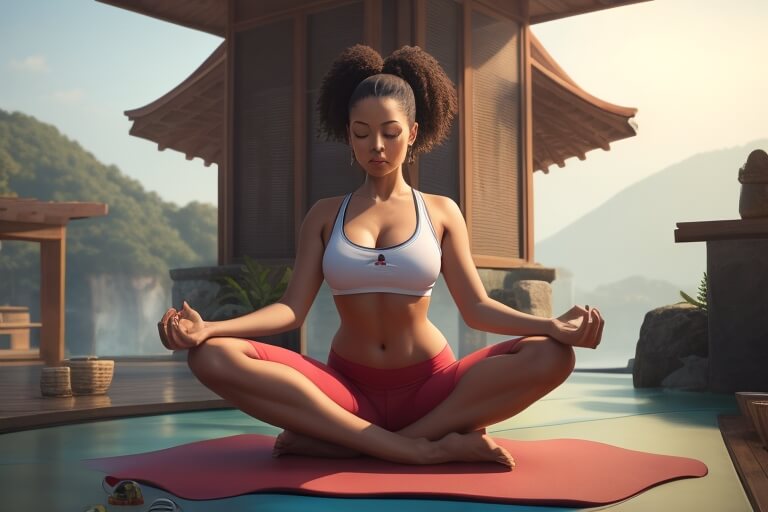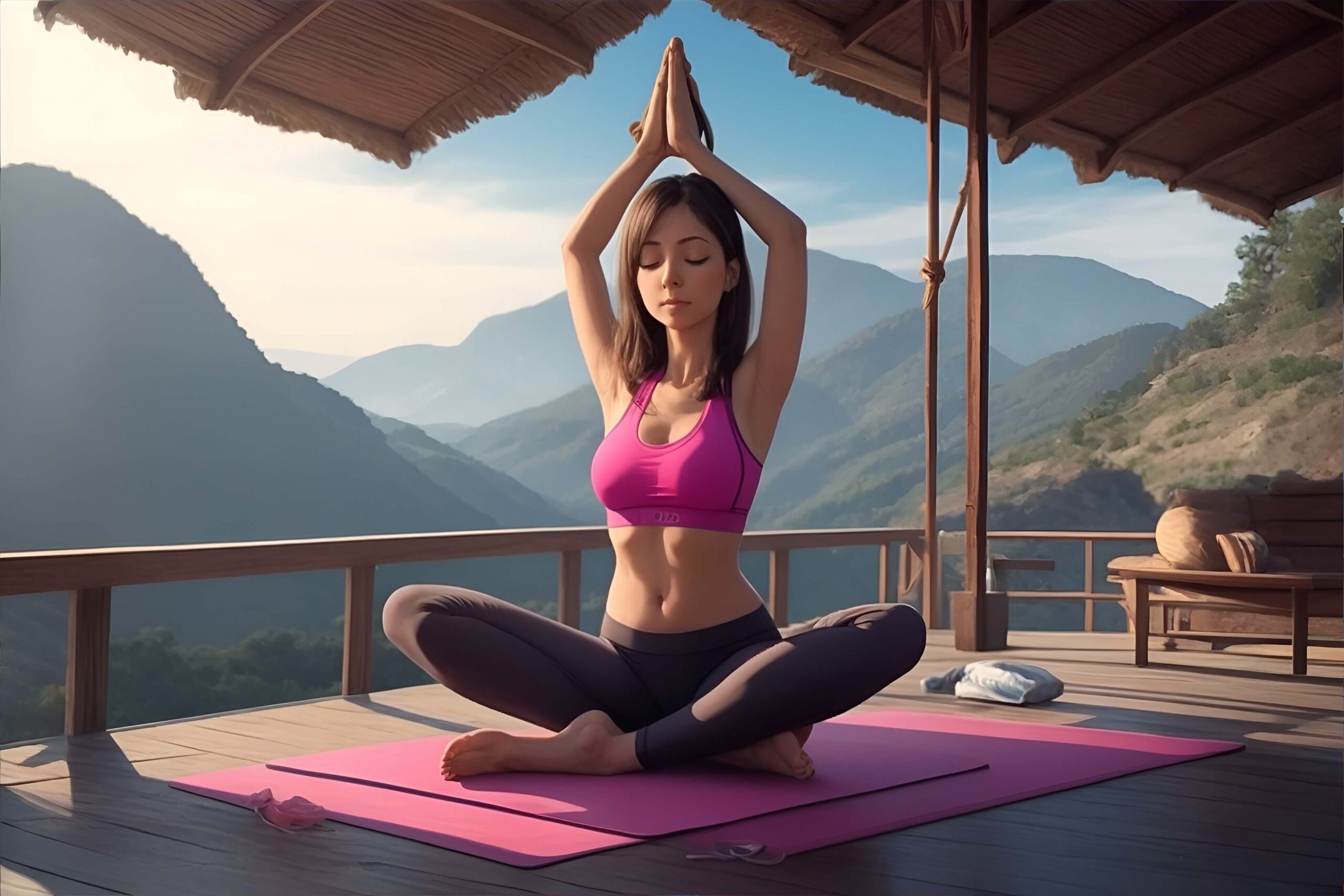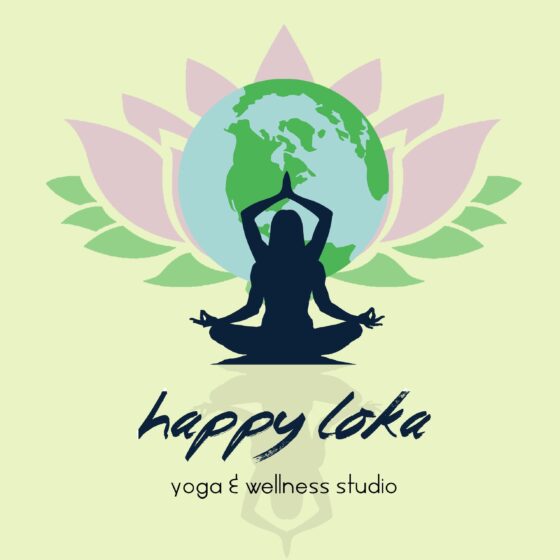Yoga, an ancient practice that has stood the test of time, offers us a path to physical and mental harmony. But did you know that yoga isn’t a one-size-fits-all practice? There are various types of yoga, each with its unique approach and benefits.
Hatha Yoga
This practice is all about mastering the fundamentals. Hatha yoga harmoniously combines physical postures (asanas), breathing techniques (pranayama), and meditation. It provides a gentle and unhurried pace, making it an ideal starting point, especially for beginners.
In Hatha yoga, you embark on a journey of self-discovery and physical well-being. Through a series of asanas, you gradually enhance your flexibility, strength, and balance. The deliberate and mindful practice of pranayama helps you synchronize breath and movement, fostering a deeper mind-body connection.
One of the most significant advantages of Hatha yoga is its accessibility. Practitioners of all fitness levels can engage in this practice without feeling overwhelmed. Whether you’re a novice seeking a solid foundation or an experienced yogi aiming to refine your technique, Hatha yoga welcomes all.
Vinyasa Yoga
For those seeking a yoga style that’s dynamic and fast-paced, Vinyasa might be your perfect match. Vinyasa yoga is often referred to as “flow yoga” because of its seamless transitions from one pose to another, all synchronized with your breath. It offers a refreshing change of pace compared to slower, more traditional yoga styles.
 In Vinyasa yoga, the continuous movement keeps your practice engaging and invigorating. As you flow from one asana to the next, you’ll build physical strength and enhance your flexibility. But Vinyasa is not just about the body; it also benefits your heart and lungs, improving cardiovascular health.
In Vinyasa yoga, the continuous movement keeps your practice engaging and invigorating. As you flow from one asana to the next, you’ll build physical strength and enhance your flexibility. But Vinyasa is not just about the body; it also benefits your heart and lungs, improving cardiovascular health.
This style of yoga is perfect for those who crave variety and enjoy exploring different poses. Each Vinyasa class can be a unique experience, offering new challenges and opportunities for growth. Whether you’re a seasoned yogi or just starting your journey, Vinyasa yoga can provide the perfect balance of physical and mental benefits.
Ashtanga Yoga
Ashtanga yoga stands out as a structured and disciplined approach to the ancient practice. Rooted in the eight-limbed path of yoga philosophy, it encompasses ethical principles and self-discipline. Ashtanga classes adhere to a meticulously crafted sequence of postures performed in a specific order. This method encourages deep concentration and fosters a meditative state, allowing practitioners to immerse themselves fully in the practice.
This style of yoga is not for the faint-hearted; it’s a challenging journey that demands commitment and dedication. Through the consistent practice of Ashtanga, individuals can build not only physical strength but also endurance, resilience, and a profound connection between body and mind.
Bikram Yoga
For those who embrace the heat and seek a transformative yoga experience, Bikram yoga may be the perfect choice. Bikram classes offer a unique practice consisting of 26 asanas (yoga poses) and two specific breathing exercises, all performed in a room heated to approximately 105°F (40°C). This intense heat is a defining feature of Bikram yoga and is believed to have several benefits for practitioners.
The high temperature in Bikram yoga serves a dual purpose. Firstly, it promotes flexibility. The heat allows your muscles to become more pliable, making it easier to move into and hold challenging poses. Secondly, it’s said to facilitate detoxification by encouraging the release of toxins through sweat. Sweating profusely during a Bikram session can leave you feeling cleansed and refreshed.
Prepare to embrace the sweat during a Bikram class; it’s a fundamental aspect of the practice. Despite the initial discomfort, many practitioners find the experience invigorating. The combination of intense heat, precise asanas, and controlled breathing creates a unique synergy that leaves you with a sense of rejuvenation and vitality.
It’s important to note that Bikram yoga may not be suitable for everyone, especially those with certain medical conditions or sensitivities to extreme heat. Before embarking on your Bikram journey, consult with a healthcare professional and consider starting with a traditional Hatha or Vinyasa class to build a foundation.
Iyengar Yoga
Iyengar yoga shines as a practice that places an unwavering emphasis on precise alignment and the artful use of props such as belts and blocks to attain it. Developed by B.K.S. Iyengar, this style is a blessing for those seeking meticulous attention to detail, whether they’re recovering from injuries, aiming to refine their practice, or simply pursuing the benefits of proper alignment.
 The heart of Iyengar yoga lies in its commitment to precision. Each asana is carefully crafted to align the body with the utmost accuracy. The incorporation of props, like belts, blocks, and blankets, ensures that practitioners achieve the correct alignment even as they deepen their stretches. This makes Iyengar yoga an ideal choice for individuals who want to correct their posture, rehabilitate from injuries, or work through physical limitations.
The heart of Iyengar yoga lies in its commitment to precision. Each asana is carefully crafted to align the body with the utmost accuracy. The incorporation of props, like belts, blocks, and blankets, ensures that practitioners achieve the correct alignment even as they deepen their stretches. This makes Iyengar yoga an ideal choice for individuals who want to correct their posture, rehabilitate from injuries, or work through physical limitations.
What truly sets Iyengar yoga apart is its methodical approach. Poses are held for extended durations, allowing you to explore the intricacies of each posture. This not only enhances your body awareness but also fosters a profound sense of stability and control. Through patience and practice, you gradually refine your understanding of the asanas, unlocking their full potential.
Kundalini Yoga
Kundalini yoga, often referred to as the “Yoga of Awareness,” invites you on a profound journey within yourself. It is a unique and powerful practice that seeks to awaken your dormant inner energy, known as Kundalini, believed to be coiled at the base of your spine. By combining asanas (postures), breathwork, and meditation, Kundalini yoga unlocks the potential for profound transformation, leading to a higher state of consciousness.
At the core of Kundalini yoga is the concept of awakening the dormant energy within us. This practice acknowledges that we all possess a latent source of power and awareness that, when activated, can lead to spiritual growth and enlightenment. Through specific postures and breath techniques, practitioners aim to stimulate the Kundalini energy, allowing it to ascend through the body’s energy centers or chakras.
One of the hallmarks of Kundalini yoga is its emphasis on breath control, known as pranayama. Breathwork in Kundalini is dynamic and deliberate, helping to facilitate the flow of energy and clear any blockages. It’s through this controlled breathing that practitioners access deeper levels of self-awareness and spiritual connection.
Meditation is another integral component of Kundalini yoga. Meditation sessions are often accompanied by mantras (repeated sounds or phrases) and mudras (hand positions) to channel energy and focus the mind. The meditative aspect of Kundalini yoga fosters inner peace, clarity, and a sense of oneness with the universe.
Kundalini yoga is renowned for its transformative effects on the mind and spirit. With regular practice, it can lead to heightened self-awareness, improved mental clarity, and a profound sense of inner peace. Many practitioners describe Kundalini yoga as a path to self-discovery and a journey towards a higher state of consciousness.
Yin Yoga
In the bustling realm of yoga, Yin yoga emerges as a serene and introspective counterpart to more dynamic styles. It beckons practitioners to decelerate, find tranquility, and embark on an inner voyage of self-discovery. Unlike the swift sequences of Vinyasa or the vigorous nature of Ashtanga, Yin yoga offers a contrasting experience.
The heart of Yin yoga lies in the prolonged holding of poses, often extending from three to five minutes, or even more. Although this might initially appear challenging, it serves as a potent method for targeting connective tissues and fascia within the body. While other yoga styles predominantly focus on muscle engagement, Yin yoga pays special attention to these deeper layers, fostering improved flexibility and mobility over time.
Restorative Yoga
The tranquil sanctuary of restorative yoga beckons like a soothing breeze. This unique style of yoga is centered around the art of relaxation, offering a serene escape from the demands and stresses of daily existence. Restorative yoga gently guides practitioners towards a state of deep repose, rejuvenating both the body and mind.
At the core of restorative yoga are a series of gentle and well-supported poses, each accompanied by a plethora of props like blankets, bolsters, and blocks. These props cradle the body in comfort, allowing you to effortlessly melt into each pose. By minimizing physical effort and encouraging complete surrender, restorative yoga grants the gift of profound relaxation.
Beyond the physical benefits, restorative yoga is renowned for its ability to reduce stress, quiet the mind, and improve overall well-being. As you linger in each pose, your nervous system shifts from a state of “fight or flight” to “rest and digest,” promoting healing and revitalization. This practice serves as a haven of tranquility, offering respite from the constant whirlwind of life’s demands.
